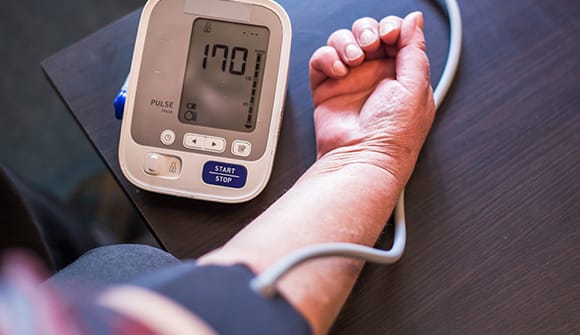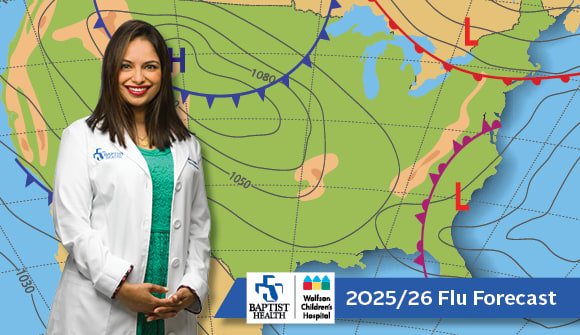See a spike in your blood pressure?
7 mistakes that could be boosting your reading.
Article Date:

If you’re monitoring your own blood pressure, a 10-point upward swing can be horribly disconcerting. It’s big enough to mean the difference between perfect health and an increased risk of heart attack, stroke, and cognitive impairment.
What patients don’t commonly know, though, is just how variable blood pressure can be, said Peter Jansen, MD, a family physician at Baptist Primary Care on Fleming Island. Driving in traffic can give you higher blood pressure. So can a fight with your spouse or a stressful job. Even something as simple as a full bladder. Anything that creates stress could boost your reading.
“Technically, the way you’re supposed to measure blood pressure is to alleviate those things,” Dr. Jansen said. “You should sit quietly in a chair for five minutes and then take your blood pressure on each arm.”
In practice, that’s not always what happens. Blood pressure readings can be wrong even in a clinical environment. A patient is nervous about seeing a doctor and the stress inches his level upward. Or a medical assistant moves a patient to another room before taking her blood pressure.
“That blows it because now you’ve made them stand up,” Dr. Jansen said.
It’s tempting for doctors to over-treat just to be on the safe side, he said. But unneeded blood pressure medicine can cause other problems, like lightheadedness or passing out.
“When a new patient’s blood pressure is high, I find if I have them go home and monitor for a couple of weeks, it often drops,” said Dr. Jansen.
On the other hand, if you’re prone to high readings, it’s a good idea to self-monitor your blood pressure monthly, to make sure it maintains a health range most of the time.
7 mistakes to avoid while taking your blood pressure
- A full bladder can add 10 to 15 points your blood pressure reading.
- Poor support for your feet or back while seated can raise your blood pressure reading by 6 to 10 points.
- Crossing your legs can add 2 to 8 points to your reading.
- Your arm hangs by your side or you hold it up while getting a reading. Your blood pressure numbers may be 10 points higher than the actual figure. Your arm should rest on a chair or counter, and the blood pressure cuff should be level with your heart.
- Placing the cuff over clothing can add 5 to 50 points to your reading.
- A too-small cuff can add 2 to 10 points to a reading.
- Talking can add 10 points to your reading.
A healthy systolic blood pressure—the “upper” number—should be less than 120. A range of 120 to 129 is considered elevated, and higher than 130 suggests stage 1 hypertension (high blood pressure).
Omron is a well recommended brand name in blood pressure monitors for home use, Dr. Jansen said. You can use blood pressure monitors available at pharmacies or grocery stores. Rescue stations will also check your blood pressure for you if they are not busy, or you can visit any of our Baptist Wellness Centers.
If you are concerned about your blood pressure, and don’t have a primary care provider, visit baptistjax.com/bpc to find a doctor near you.



